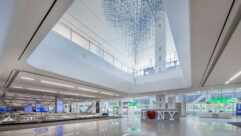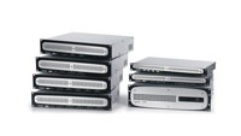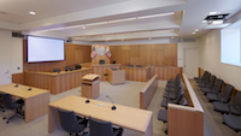
Systems Integration and the NFPA 72 Code
Jan 23, 2012 11:34 AM,
By Chuck Wilson, NSCA Executive Director
Mass Notification Supplement
Systems Integration and the NFPA 72 Code
Product: Atlas Sound ControlKom 2.0

Chuck Wilson, NSCA Executive Director
Adoption of the 2010 National Fire Protection Association (NFPA) code has caused a lot of excitement and discussion amongst electronics systems integrators and traditional fire alarm providers. This is a very significant change in the code, yet it will result in a slower adoption curve than you might think. The state, or sometimes the municipality, can choose when to start the enforcement. Local authorities having jurisdiction (AHJs) influence the timeframe when they will be properly trained and staffed to adopt and enforce a new code.
We expect that the existing European EN 54 standard will influence the acceptance here. Many manufactures have been in compliance with that code since its adoption decades ago. However, the U.S. was considerably slower to reach an agreement on the interaction of multiple systems and the audio intelligibility characteristics in order to allow manufacturers to build the proper interfaces and testing procedures.
MNEC is a simple combination of mass notification and emergency communications. The logic being that mass notifications systems (MNS) and emergency voice alarm communication systems (EVACS) as defined in the code will become an integrated solution in many applications. At a minimum, they will be defined within the same specification section under MasterFormat.
NSCA has been at the forefront of support for what is now language in the code. Beginning in 1995, NSCA assigned subject matter experts to work with the NFPA and Underwriters Laboratories (UL) to establish groundwork for what are now the speech intelligibility standards in NFPA 72 and UL 2572. In 2009, to serve as a clearing house of information, NSCA launched the mass notification and emergency communications website, www.mnec.org—which is a placeholder for current reports, presentations, whitepapers, and articles related to the markets and systems impacted by the new code revisions.
As an introduction to MNEC, I encourage you to start with chapter 24 of the 2010 NFPA 24. It will give you an idea of the minimum expectations required within the code. Chapter 24 notes that for the first time ever, the emergency communications system shall take priority over the fire alarm for notification purposes. Our argument since the beginning was that this only made sense if we can first prove that an audio system has the capability of both audibility and intelligibility. This was successfully proven in both predictability and performance.
From NSCA’s perspective, a lot of volunteer time and industry expertise lie far beneath the surface of the revised 2010 NFPA code. There are far too many industry experts to mention, but they all deserve the credit. As you begin to study these changes, I encourage you to remember why this began in the first place: Our industry has the capability to significantly improve life safety and communications. It made sense that if we had the technology, and had proven effectiveness in Europe, then we needed to keep the issues of intelligibility and system override in front of the code-making panels, which we have successfully done.
In 2012, I predict we will see many locations adopting the 2010 version of the NFPA code. In two or three years more, it will become the standard. Partnerships between audio and fire alarm companies will occur, and new interfaces between digital signage and MNEC systems will be offered. We are in the beginning phases of a new business offering for many companies.
From a human perspective, we remember those who lost their lives as far back as the Kings Cross subway fire in London, the incident at Columbine High School, and the tragedies at Northern Illinois and Virginia Tech Universities. We need to take pride in our skills, training, and capabilities and encourage the local AHJs to embrace the new provisions. We won’t necessarily be able to prevent future situations from occurring, but we can help with risk assessments and solutions to assist in the notifications, provide clear and concise messages, and do our part to make public venues safe.










